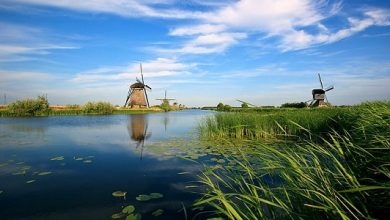Difference between solstice and equinox Similarities and FAQs
Solstice and equinox
In this article we will provide you the difference between solstice and equinox Similarities and FAQs.
what does solstice mean
The solstice is an astronomical event that occurs twice a year, at the equinoxes and solstices. During a solstice, the Earth is at the point in its orbit that is furthest from the Sun. This means that there is a longer or shorter day depending on the hemisphere. In the northern hemisphere the summer solstice is when we have the longest day and for us it marks the beginning of summer; and in winter, we will have the shortest day to start the cold winter. These dates demarcate the seasonal changes: spring in March-April (spring equinox) and autumn in September-October (autumn equinox). The solstice has also been used since ancient times by various cultures as the basis for pagan festivals and mythological nature sexy girls and some of them have a fish-shaped lower body. Over time, the stories.
what does equinox mean
Equinox is a term Chinese . In addition, it was used to describe the time when the days and nights are equally long. It occurs twice a year, first in the spring , when it is known as the vernal or vernal equinox, and then in the fall, called the autumnal equinox. It is determined by the position of the sun with respect to the Earth and occurs when its rays are exactly perpendicular to the equatorial line to produce a day exactly equal to a night. From then on, the days in the northern hemisphere (winter) begin to decrease while the days increase in the south (summer). The equinox symbolically marks each beginning of the climatic season, being also significant for many ancient cultures for thousands of years.
Similarities Between Solstice and Equinox
- Solstices and Equinoxes _They are astronomical phenomena that occur on Earth during the year.
- Both are related to the rotation and translation movement of the planet around the Sun, as well as its position with respect to it.
- The summer solstice occurs when the day is longest, while the winter solstice occurs when the day is shortest; For its part, an equinox occurs when the days have exactly the same amount of light and darkness.
- These coincidences mark the changes between the cold and intermediate seasons (summer/winter) and the warm and intermediate seasons (spring/autumn).
- Therefore, both events are similar due to their shared astronomical characteristics: they indicate times when there is equality between the amount of sunlight received by the Earth during a given period.
Differences between solstice and equinox
- A solstice is the time in a year when the days are shortest or longest, depending on whether it is a summer or winter solstice respectively. This is due to the apparent movement of the Sun around the planet.
- For its part, an equinox occurs when the Earth’s axis is perpendicular to the imaginary line between the Earth and the Sun, which causes the days and nights to have exactly 12 hours each.
- It also indicates the beginning of spring and autumn in the northern hemisphere.
Frequent questions
What is solstice and what does it consist of?
Solstice is an astronomical phenomenon that occurs twice a year, in the months of June and December. At the summer solstice (June), the Sun is closer to Earth’s equator than at any other time of the year, making it the longest day of the year. On the contrary, in the winter solstice (December) the Sun is farthest from the terrestrial equator and as a result we have the shortest day. During this period there are also variations in daylight hours and even weather patterns vary between geographic regions due to the apparent oblique movement of the Sun on Earth.
What is the summer and winter solstice?
The summer solstice occurs when the Sun reaches its highest point in the sky, marking the start of summer. While the winter solstice is when the Sun reaches its lowest position in the sky, marking the arrival of winter.
What happens at the equinoxes and solstices?
The equinoxes and solstices are specific times of the year when the Earth is in its orbit around the Sun. At the vernal (or vernal) equinox, day and night are the same length, while at the summer solstice, the day is longer than the night. On the other hand, at the autumnal equinox, the night is longer than the day, while at the winter solstice, daylight hours are considerably shorter.
When does the solstice occur?
The solstice occurs on June 21 in the Northern Hemisphere and December 21 in the Southern Hemisphere.
What is the equinox?
The equinox is the moment when the length of day and night are equal. It occurs twice a year, once in March (spring equinox) and again in September (autumn equinox). During the equinoxes, the sun rises directly over the Earth’s equator.
What is the difference between the equinox and the solstice?
The difference between the equinox and the solstice is that an equinox occurs when the Earth is at its lowest point of inclination with respect to the Sun, which causes the days and nights to be equal. A solstice occurs when the Earth is most tilted toward the Sun, producing the longest days of the year (summer) in the Northern Hemisphere and the shortest days of the year (winter) in the Southern Hemisphere.
What causes the equinox?
The equinox is the time when day and night are equal in length, occurring twice a year. This is due to a unique combination of the movements of the Sun and the Earth. During these events, the Earth’s rotation causes the sun to shine directly on Earth’s equator, producing a uniform lighting effect at all points on the planet.




